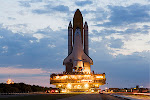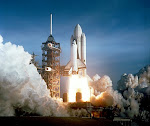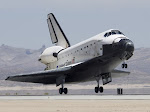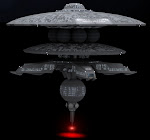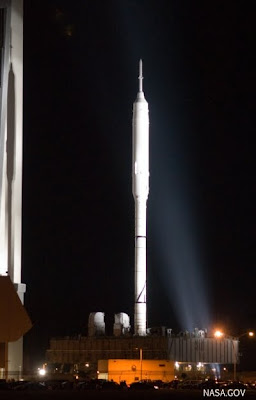
When the Apollo 13 crew jettisoned the crippled Service Module as they approached Earth, they saw the extent of the damage from the explosion of an oxygen tank. "There's one whole side of that spacecraft missing!" Jim Lovell radioed to Mission Control, his voice reflecting his incredulousness at seeing the damage of a 13-ft panel blown off the spacecraft. However, the situation could have been more dire. The heat shield on the Command Module could have been damaged. What's more, NASA engineer Jerry Woodfill said that instead of the panel blowing out, the explosion could have — and maybe should have –severed the Command Module from the Service Module.
Photos taken by the Apollo 13 crew after the service module was jettisoned in preparation for the command module’s reentry via the heat shield revealed that not only was the panel missing from the side of the spacecraft — blown into the vastness of space by the exploding pressure of the detonating oxygen – there was also damage to the Hi Gain Antenna, at the right of the vehicle drawing above, indicating the panel had catapulted into space, striking the antenna. What the images couldn't show, and what the Apollo 13 crew couldn't see was if there was any damage to the Command Module's heat shield.
"The structural design of the interior of the Service Module is that is has a long open tunnel-like volume in the center of the module, about 30 inches by 13 feet," said Woodfill. "The tunnel is much like a chimney such that gases, liquids, or particles could readily move through it toward the main engine bell at the right and the heat shield at the left. The tunnel is not sealed so that the explosive force of the burning oxygen from the exploded O2 tank 2 could escape into and around the tunnel in the direction of both the heat shield and main engine."
Woodfill said concern was voiced in Mission Control that shrapnel from the exploding tank had entered the tunnel, and perhaps ultimately caused damage to both the heat shield and main engine. The main engine wasn't the biggest issue, as the crew was able to use the lunar lander’s descent engine. (see our previous article , "Using the LM for Propulsion.") But there was only one heat shield, and it had to work to enable the capsule and the crew to survive the fiery reentry through Earth's atmosphere.
Thankfully, as it turned out ,the heat shield wasn't damaged.
But almost miraculously, Woodfill said, the command module and service module remained connected following the explosion, while the internal pressure of the explosion rocketed the exterior panel into space.
"The attachment strength of the Service Module panel to the structure required a considerable internal pressure of 24 pounds per square inch for severing it from the service module," Woodfill said. "A much lower pressure was required to separate the Command Module with its heat shield from the Service Module, only 10 pound per square inch. One can only speculate on why the panel blew and the crew capsule/service module attachment remained intact."
Since there is no air pressure in space, Woodfill explained, the force which held the vehicles together was the strength of their mechanical attachments.
"Two pressures were at work," he said. "Each attempted to overcome respective attachment forces: the force which attached the Service Module to the Command capsule and the force which attached the Service Module panel to the Service Module. Because the explosive pressure force of the oxygen was immediately applied in great strength to the panel, this overwhelming force would be expected to blast that panel apart from the vehicle, exceeding the 24 pound per square inch attachment strength. However, venting of residual explosive oxygen into the framework of the Service Module could well be expected to overcome the attachment strength between the two vehicles, separating them."
Yet, it did not. Why?
"Apparently, the presence of 'tankage' and other structure acted to mitigate and dissipate the sudden pressure spike before it reached the interface between the vehicles," Woodfill said. "However, if a shard from the exploded O2 tank 2 had punctured any of the adjacent tanks, likely a secondary explosion of any of them would have propagated both the explosion and build up of pressure. In that event, certainly, the vehicles would have experienced either a fatal separation or fatal damage to the heat shield.
A piece of shrapnel did fracture the plumbing between the oxygen tanks that allowed the oxygen to leak out of Tank 1, causing the complete loss of power in the Command Module, as without oxygen the fuel cells couldn’t work.
Some may say that having the Service Module attached to the Command Module wasn't important – it was just dead weight anyway. However, other problems could have developed without the Service Module attached, according the Apollo 13 Failure Report. Having the heat shield exposed to low temperatures for a long period could have damaged it, and internal Command Module thermal problems could arise if the Service Module was jettisoned too early. Additionally, flight control problems were anticipated if the Command Module wasn't attached.
Of course, since the Service Module was jettisoned before the crew re-entered (and the SM itself later burned up in the Earth's atmosphere) no one could do any "forensic analysis" or an engineering "autopsy" on that part of the spacecraft.
"To me, it is amazing that, one, the heat shield wasn't damaged from the explosion, and two, the connection that could withstand higher pressure ended up blowing, while the weaker connection stayed together," said Woodfill.
But those were among the many things that saved Apollo 13.







